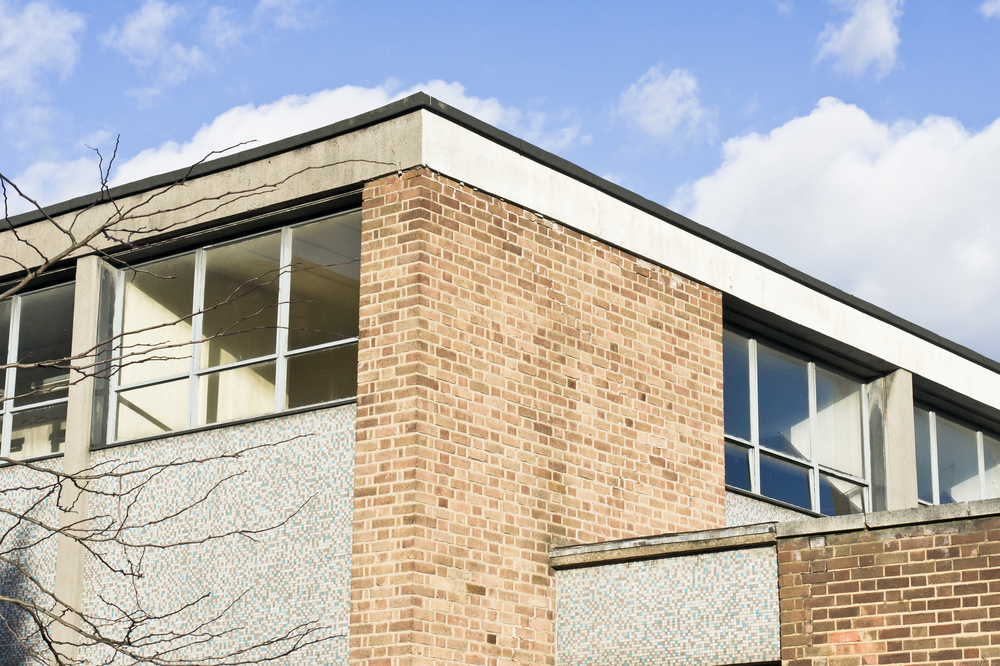Steve's Scribblings - Chocks Away!
It’s 1993, school lunchtime and four future Headteachers were engaged with in-depth consideration of a major IT problem we were all facing… how to...
2 min read
Steve Warburton 11-Sep-2023 13:23:01

The vast majority of schools that I’ve worked in had elements of their buildings built in the RAAC-era.
It’s no surprise that buildings whose construction was funded by the public purse used a cheap lightweight alternative roofing material during the years when the school estate had to expand really quickly because of the ‘baby boom’. Some of the other design decisions were terrible – as a HoD I had to manage the behaviour of 180 pupils going into a suite of six classrooms down a corridor too narrow for cat swinging – as 180 made their way out.
Some of the decisions were short-sighted… but that wasn’t surprising. Buildings needed to go up quickly and cheaply – made worse by raising the school leaving age in the 1970s. RAAC wasn’t a bad decision back then, but leaving it in place as concerns rose and risks mounted wasn’t a good decision.
By the 1980s many of those quickly-expanded, poorly-planned schools needed replacing – in whole or in part. Schools actually aren’t built to last forever but the political will to replace them needs to be there… or disasters like RAAC will keep biting us.
In the short-term the complexities of dealing with RAAC will be daunting. Remote learning is an option for some schools, but many of the devices available in 2020 are now past their shelf-life. Software to support remote learning is still improving – Microsoft TEAMS and Google Workspaces continue to build features and reliability – but teacher skills will need to come out of ‘cold storage’ and many pupils (or parents) will not welcome the move online.
For those who are resolved to maintain pupils in school, they’ll be needing to expand Wi-Fi networks, source large screens, relocate access systems, turn a suite of laptops into a mobile IT room, repurpose old devices, whilst connecting new mobile classrooms and improving the passive and active network infrastructure, as well as the power provision. Solutions will need to be integrated with construction companies and project-managed carefully to speed the restitution of normality.
Teaching pupils off-site in leased accommodation means ensuring it’s broadband-connected, secure and equipped… with many of the same problems as above, but without the benefit of proximity whilst at the same time putting increased demand on staff and students. It won’t be the well-being lift-off that many were looking forward to as the pandemic receded into the rear-view mirror.
Rectifying issues could take a long time. Significant school building projects rarely take less than 18 months to plan and deliver and the sector is already approaching saturation point as the many projects initiated by the government in 2021 begin to reach delivery stage now and into 2024. Projects require gathered expertise in building design, M & E, acoustics, fire safety, landscaping, traffic management, ICT, environmental impact and sustainability before the ground is broken and the building happens. RAAC recovery projects might be inserted into the design and delivery pipeline, compromising projects that have long been in development. If they have to ‘wait their turn’, then this could be a problem which drags on well into the next Parliamentary cycle.
What definitely can’t happen is any approach that cuts corners or compromises on safety or quality because of expediency – look where that’s got us!
The government needs to capitalise on the expertise and partnerships built up over the last two decades in the teams in the construction and associated services that have delivered quality school building projects time and again for local communities across the country. Spare capacity needs to be mobilised, the DfE-appointed school ‘case workers’ will need to engage their assistance, established excellence needs to be plundered.
Communities are already railing round to support schools which – through no fault of their own - find themselves with compromised buildings. I have to believe that the DfE is doing its utmost to rally the education construction sector to do the same.
Steve's Scribblings
Steve is our very own expert in the education sector, working with schools, MATs and various other companies to make the best possible use of ICT in education. Get in touch with us for a friendly chat about how we can help you with your own ICT problems or enquiries.

It’s 1993, school lunchtime and four future Headteachers were engaged with in-depth consideration of a major IT problem we were all facing… how to...

Data. In theory, all the data that you collect and hold should be helping you to improve the educational experience and outcomes of your pupils....

All the data that you collect and hold should be helping you to improve the educational experience and outcomes of your pupils. However, as we all...